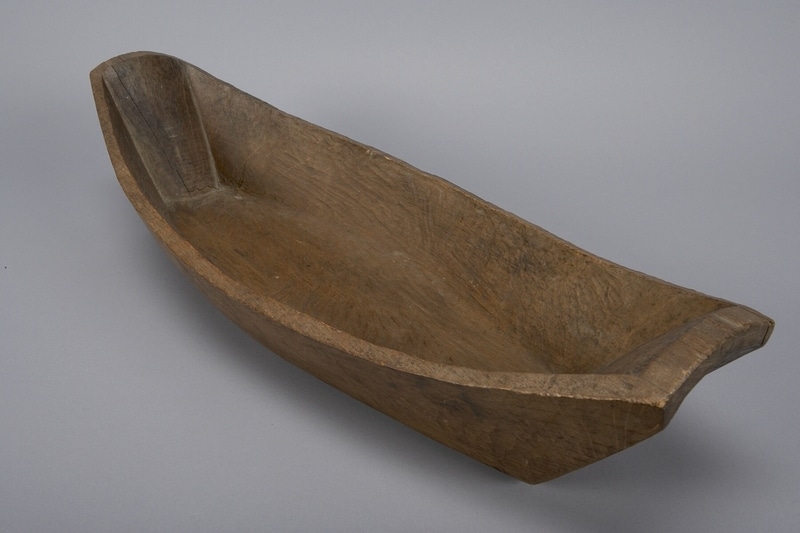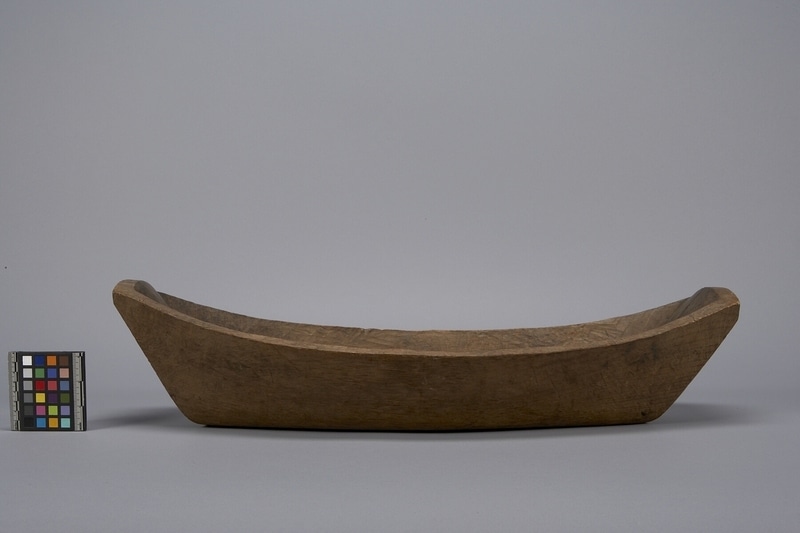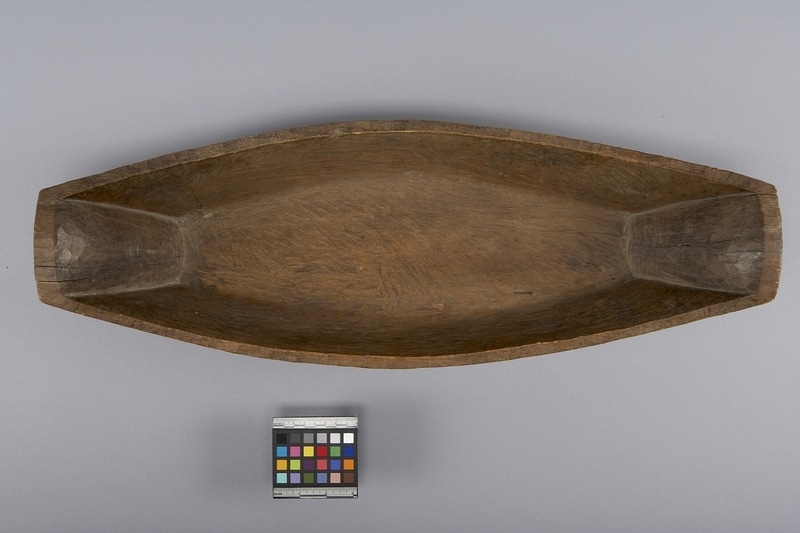Dish Item Number: A8133 from the MOA: University of British Columbia



Description
Dark brown, canoe-shaped dish carved from a single piece of wood. Surfaces are covered with adze marks. The ends of the dish are slanted with slightly concave exteriors and convex interiors, while the longer sides of the dish have slightly convex exteriors and concave interior surfaces.
History Of Use
Barnett (1955) notes that bath-tub shaped dishes, like this one, are characteristic of the Straight of Georgia region. These dishes, which were generally made from one piece of hollowed out wood, were usually three to five feet in length. He noted that the smaller versions, like this one, were often used as oil dishes. Large dishes were used at feasts, and placed before one to three distinguished visitors, with the intent of making an imposing offering. Feasts and potlatches are usually held to celebrate a change in status of a family member. Guests are invited to witness, and thereby make legitimate events such as the transfer of a name. They are also held to celebrate marriages and as memorials for deceased family members.
Cultural Context
domestic; ceremonial; mortuary ?
Narrative
Found half buried in old smoke house, Duncan, B.C.
Item History
- Made in British Columbia, Canada
- Collected in Duncan, British Columbia, Canada between 1950 and 1962
- Owned by Edith Bevan Cross before July 30, 1962
- Received from Edith Bevan Cross (Seller) and H. R. MacMillan (Funding source) on July 30, 1962
What
Who
- Culture
- Coast Salish: Quwutsun'
- Previous Owner
- Edith Bevan Cross
- Received from
- Edith Bevan Cross (Seller) and H. R. MacMillan (Funding source)
Where
- Holding Institution
- MOA: University of British Columbia
- Made in
- British Columbia, Canada
- Collected in
- Duncan, British Columbia, Canada
When
- Collection Date
- between 1950 and 1962
- Ownership Date
- before July 30, 1962
- Acquisition Date
- on July 30, 1962
Other
- Condition
- fair
- Accession Number
- 0081/0123